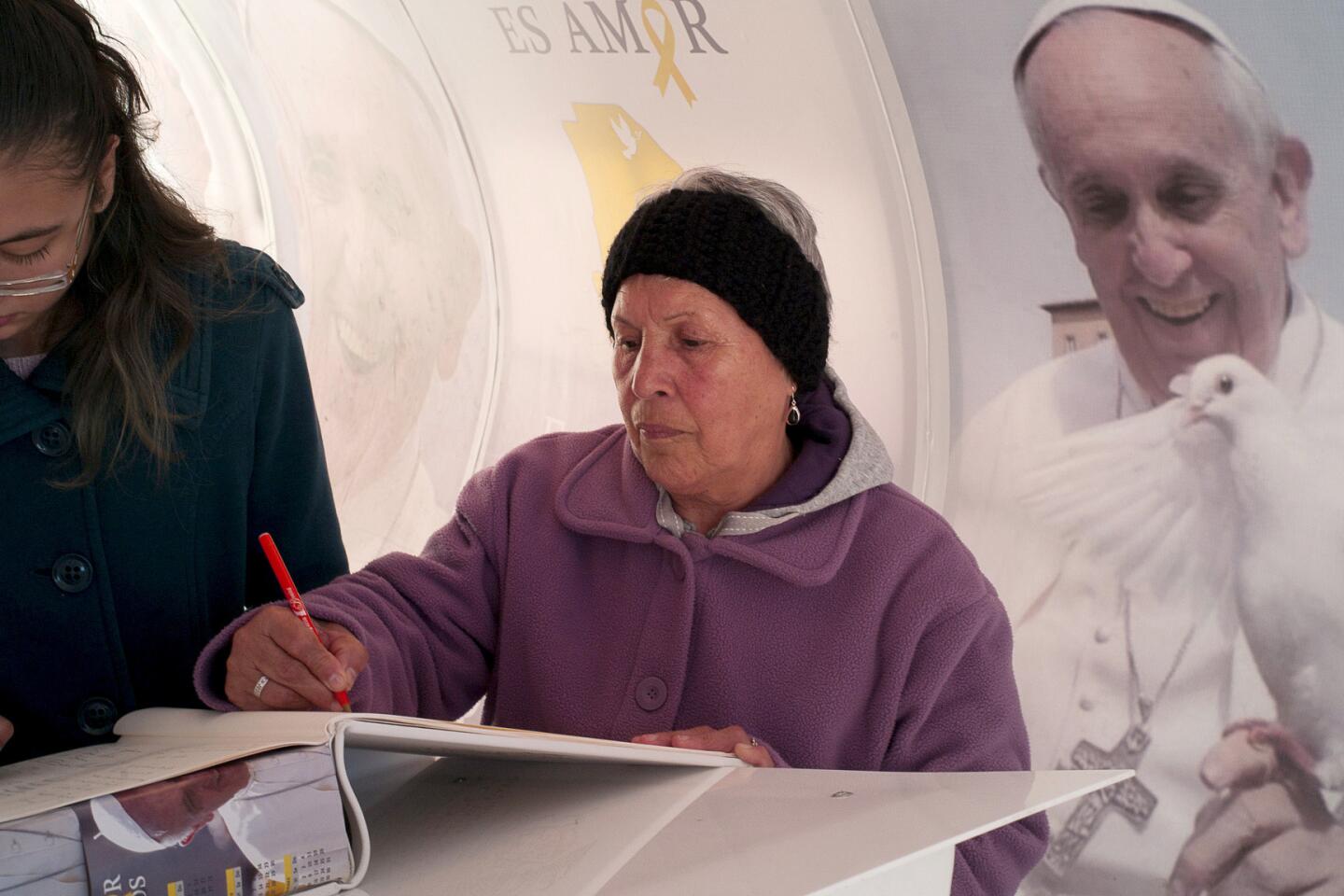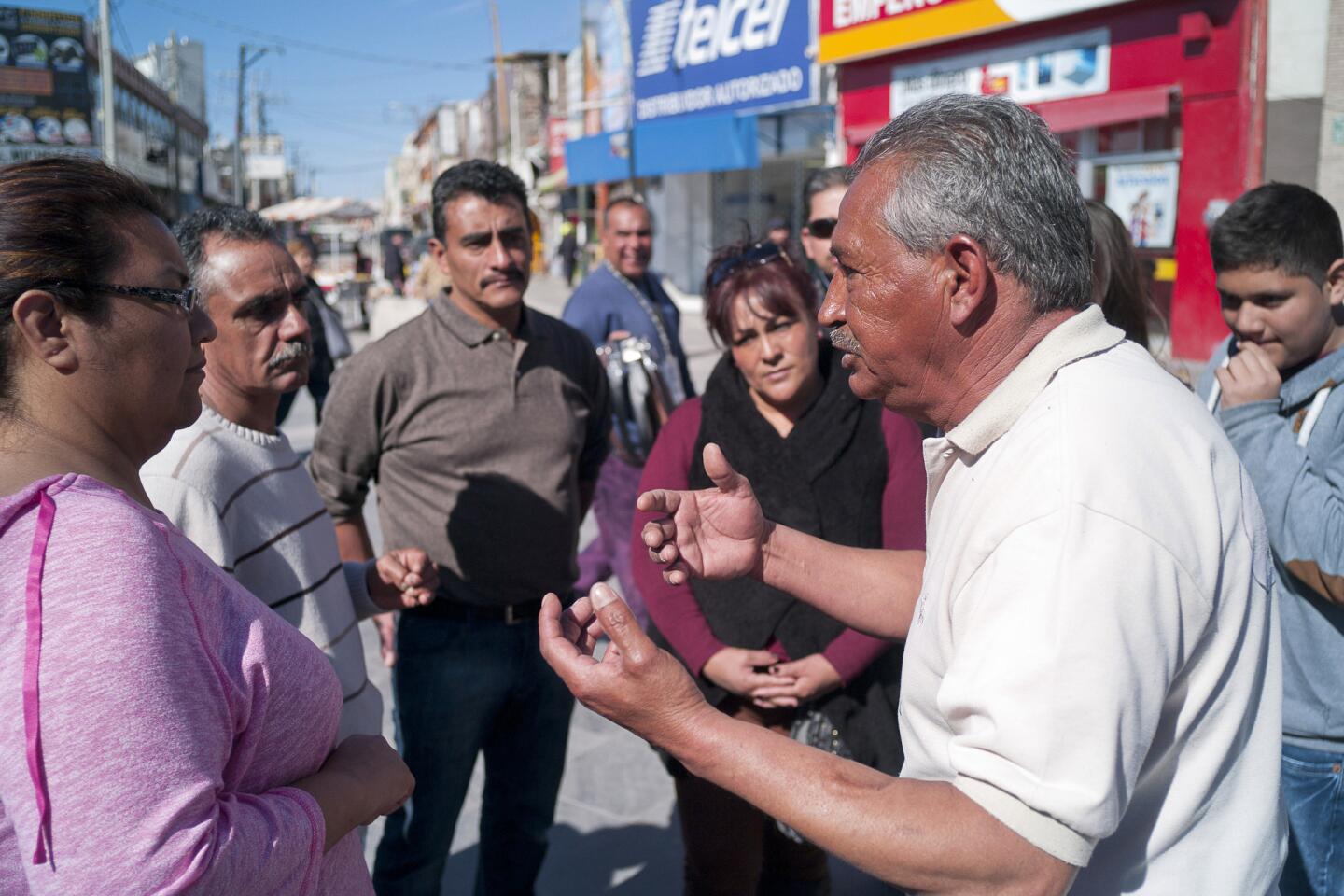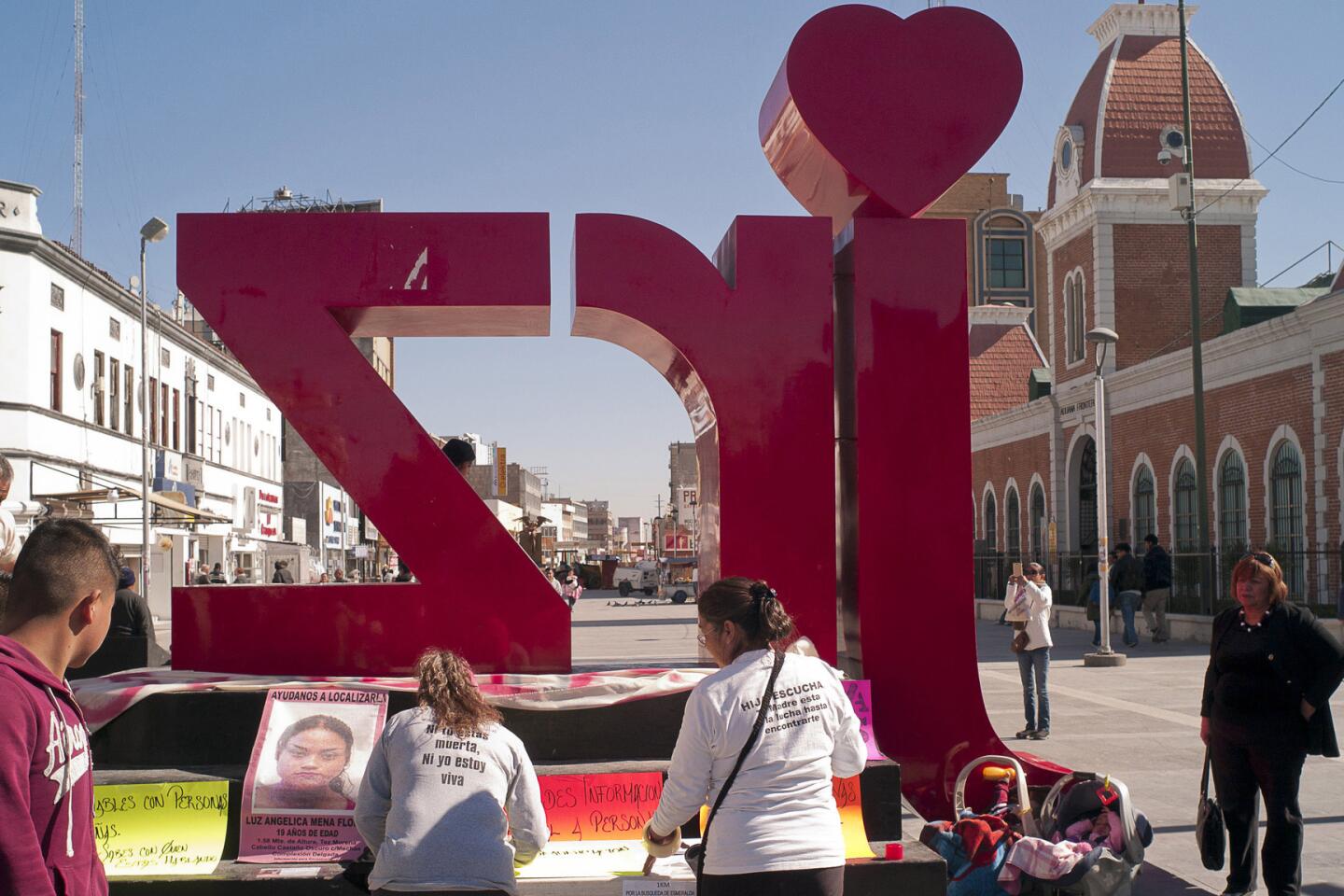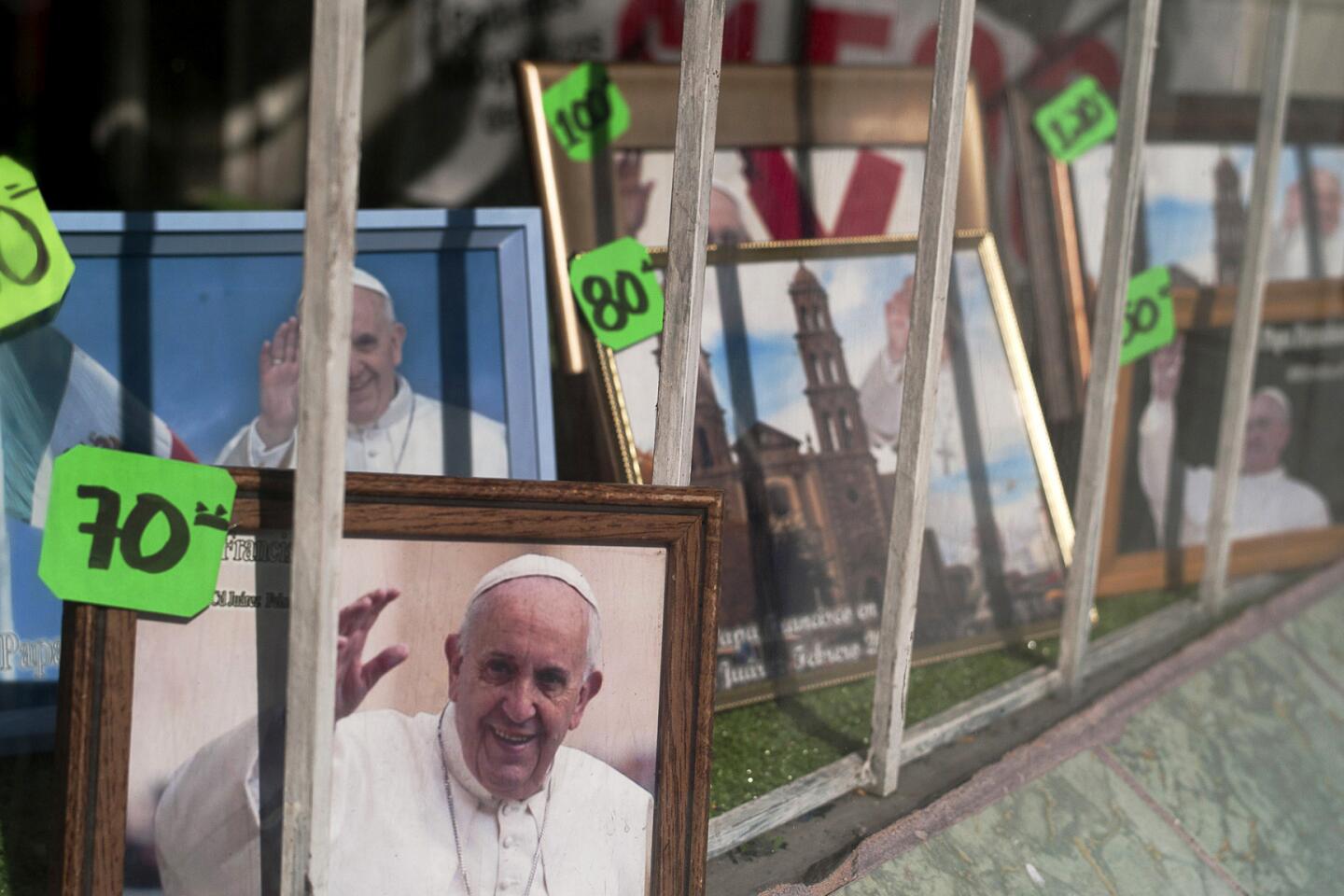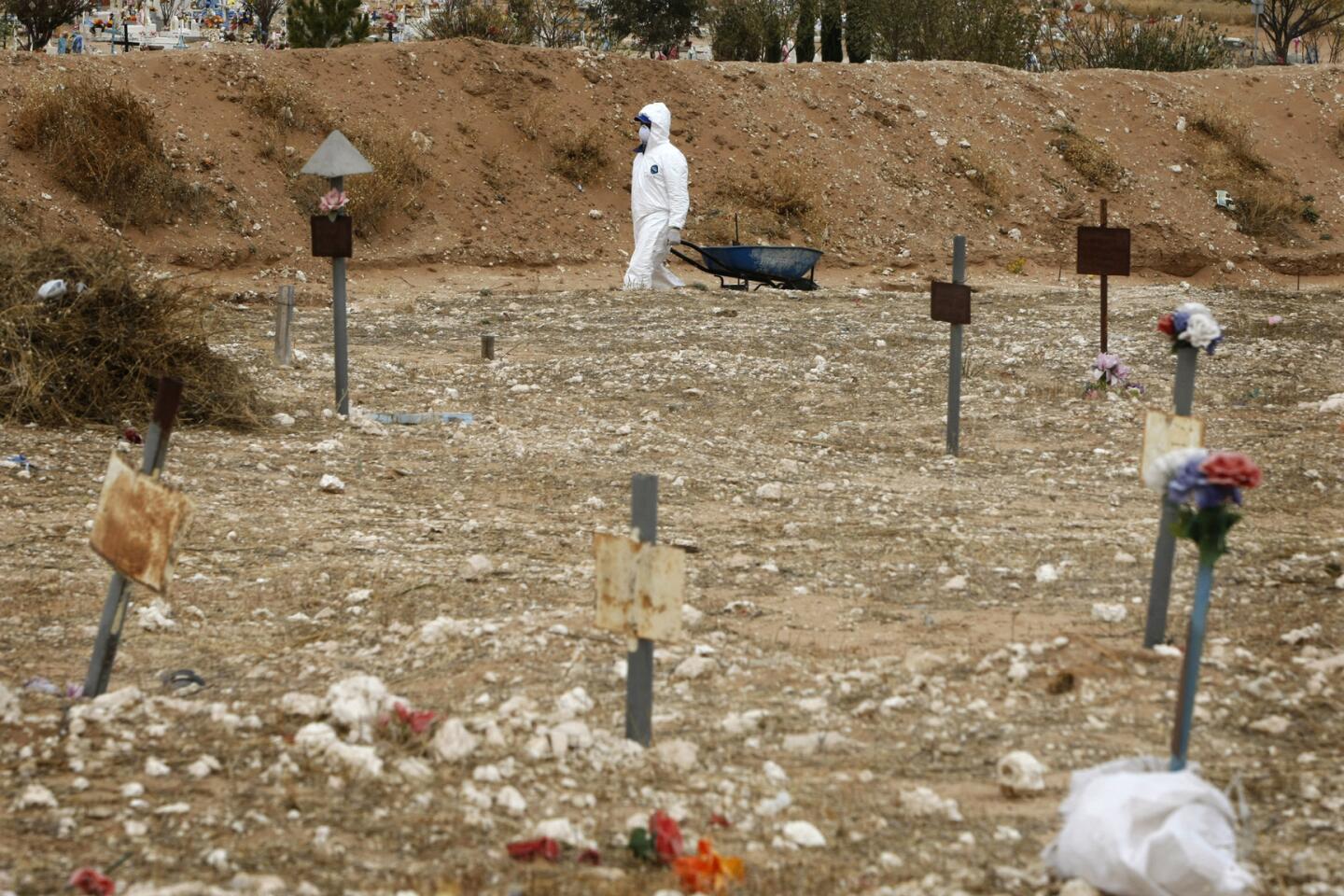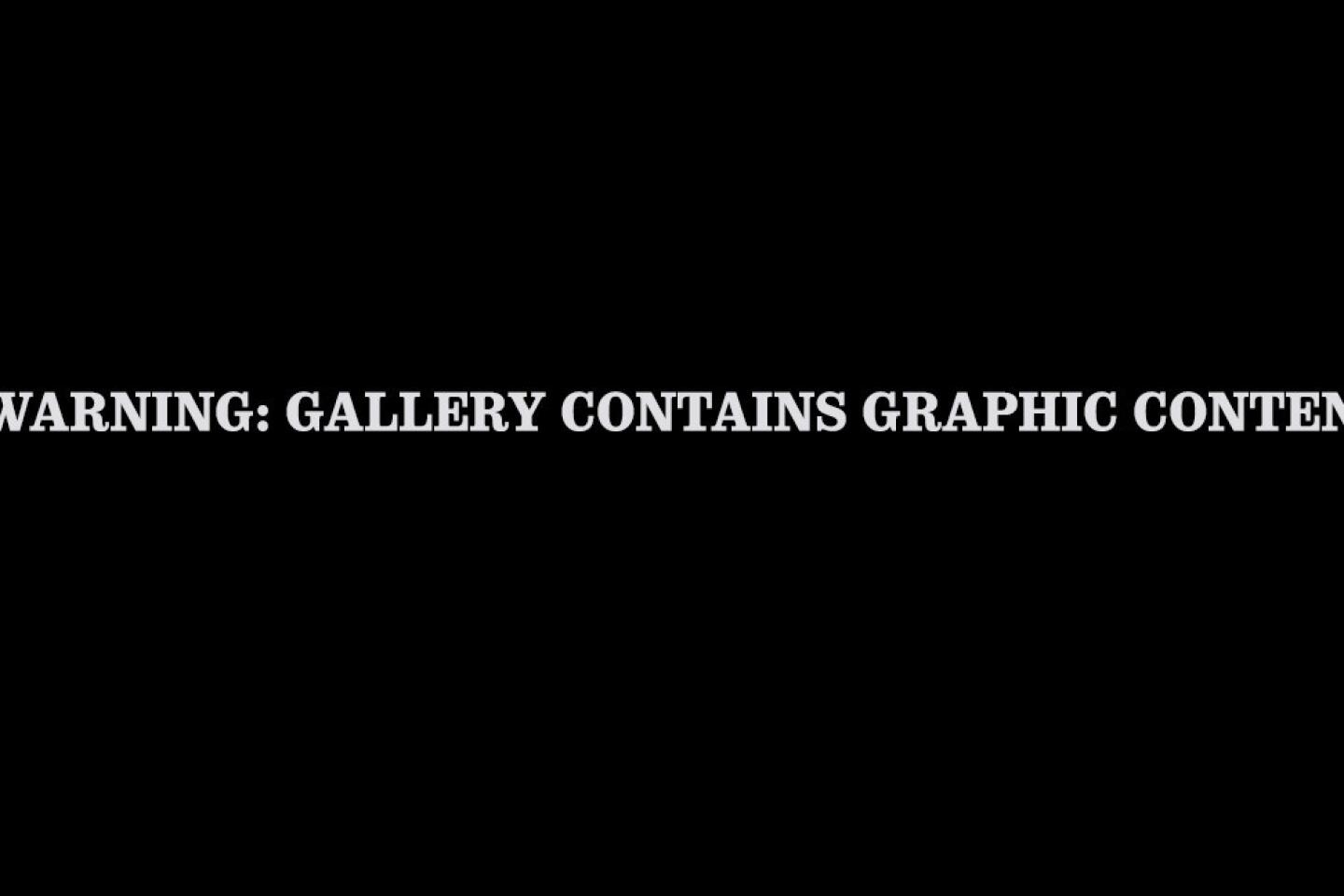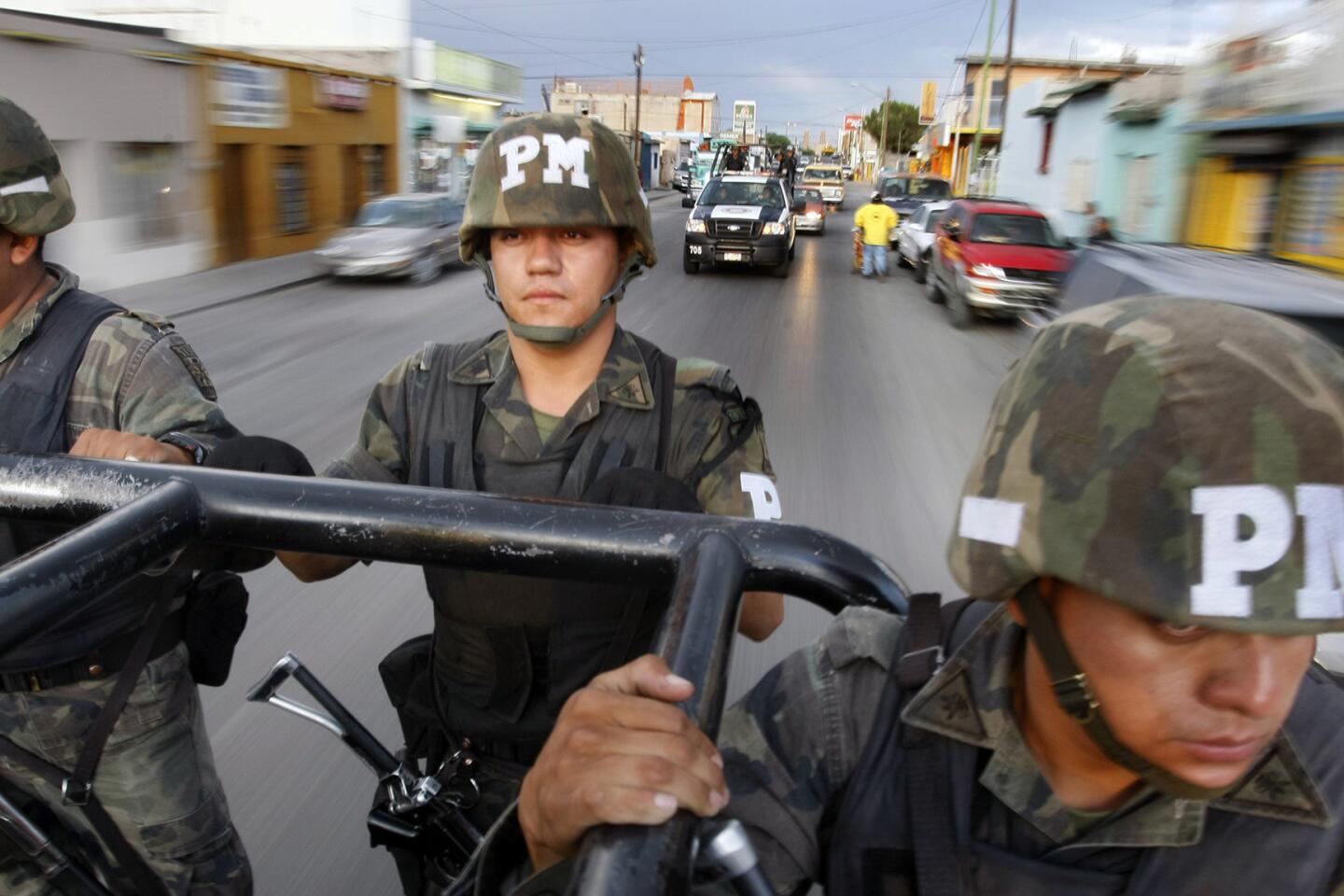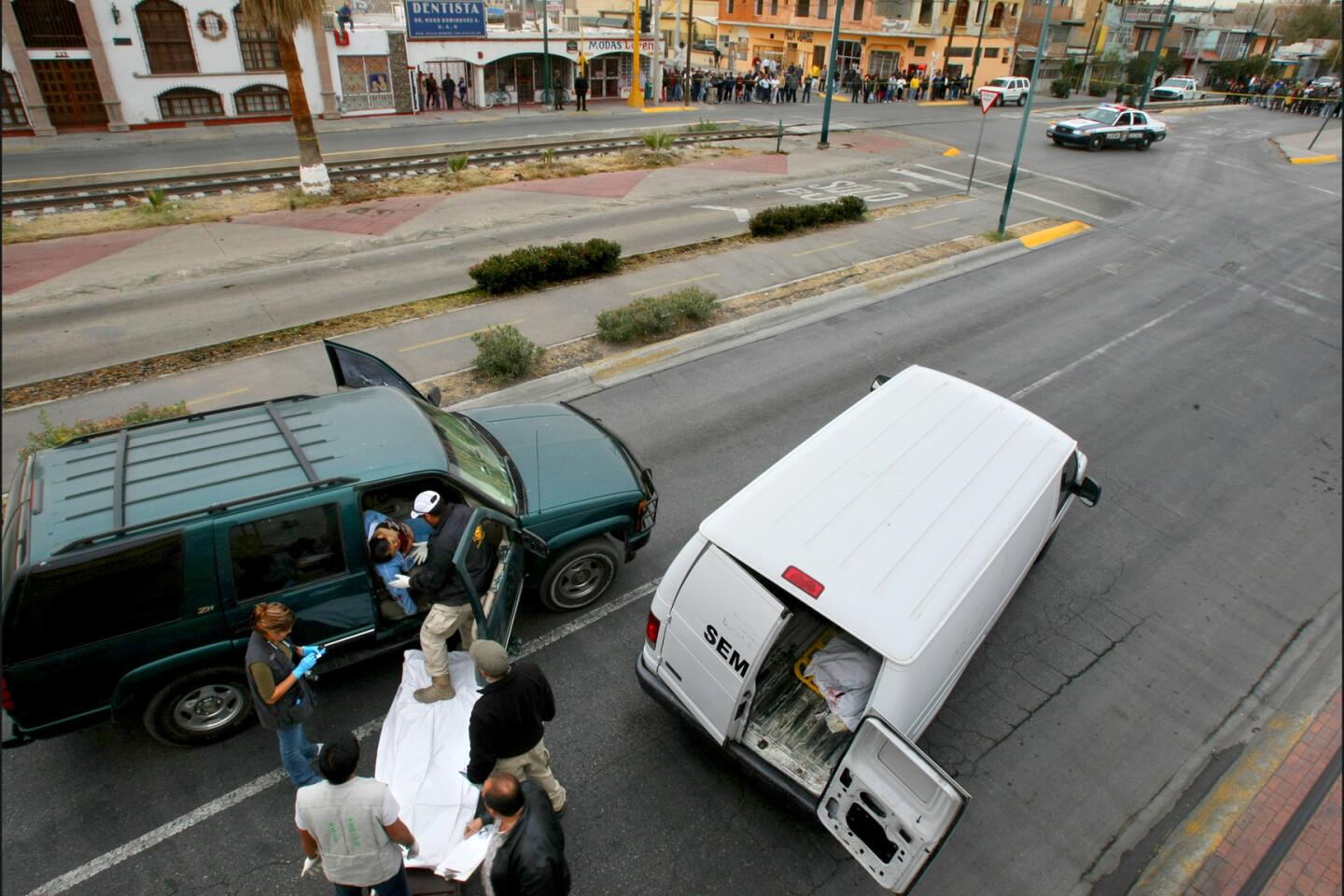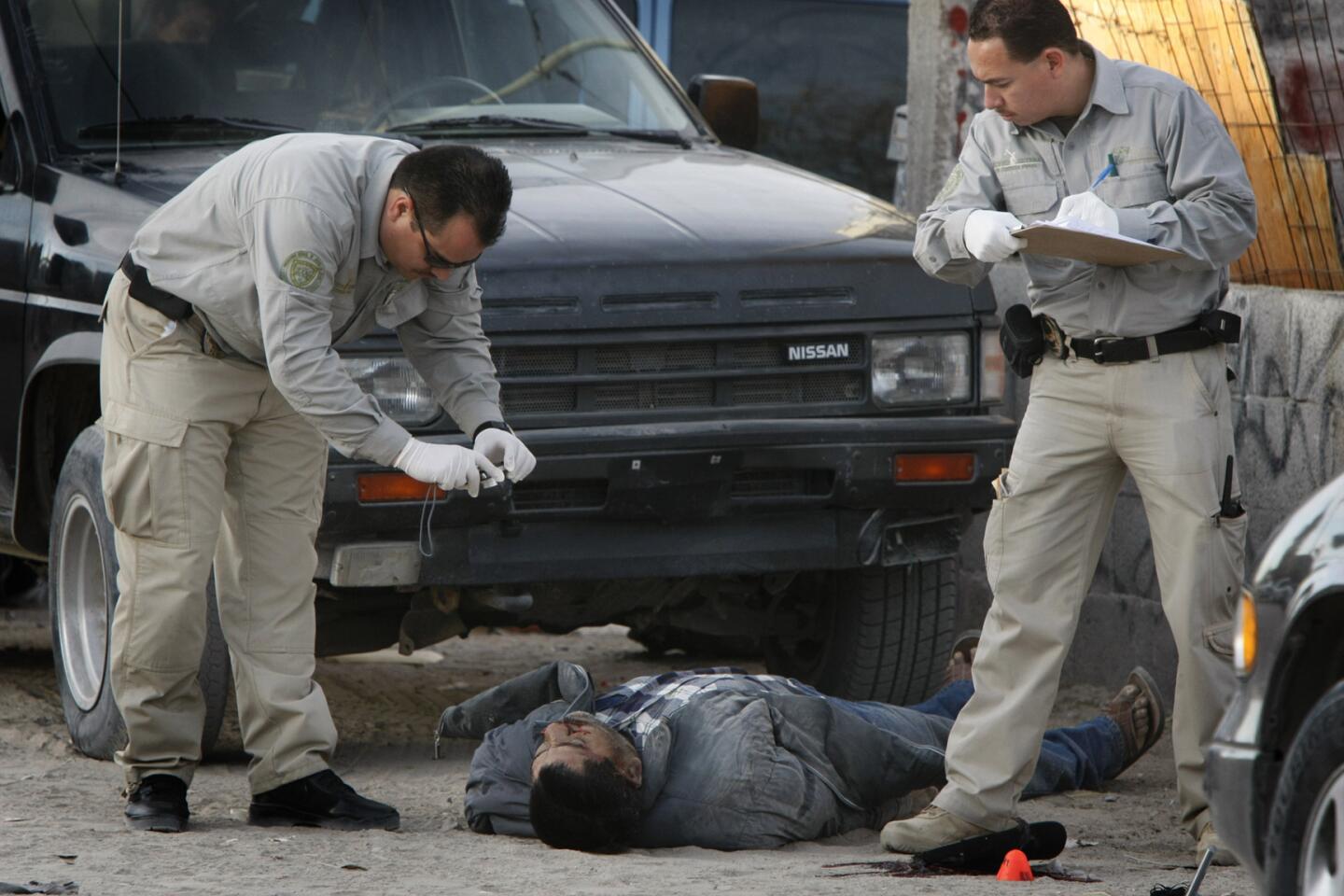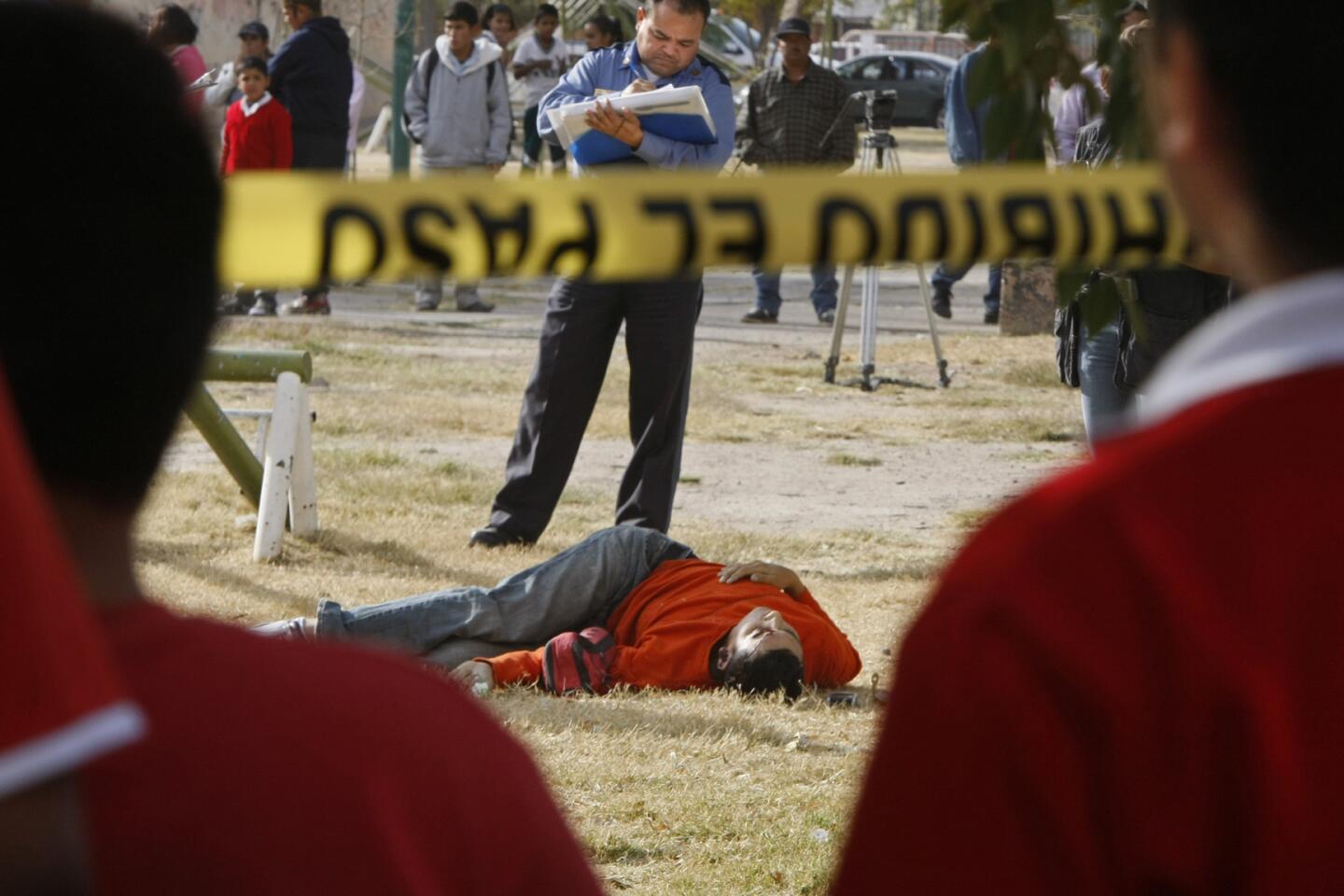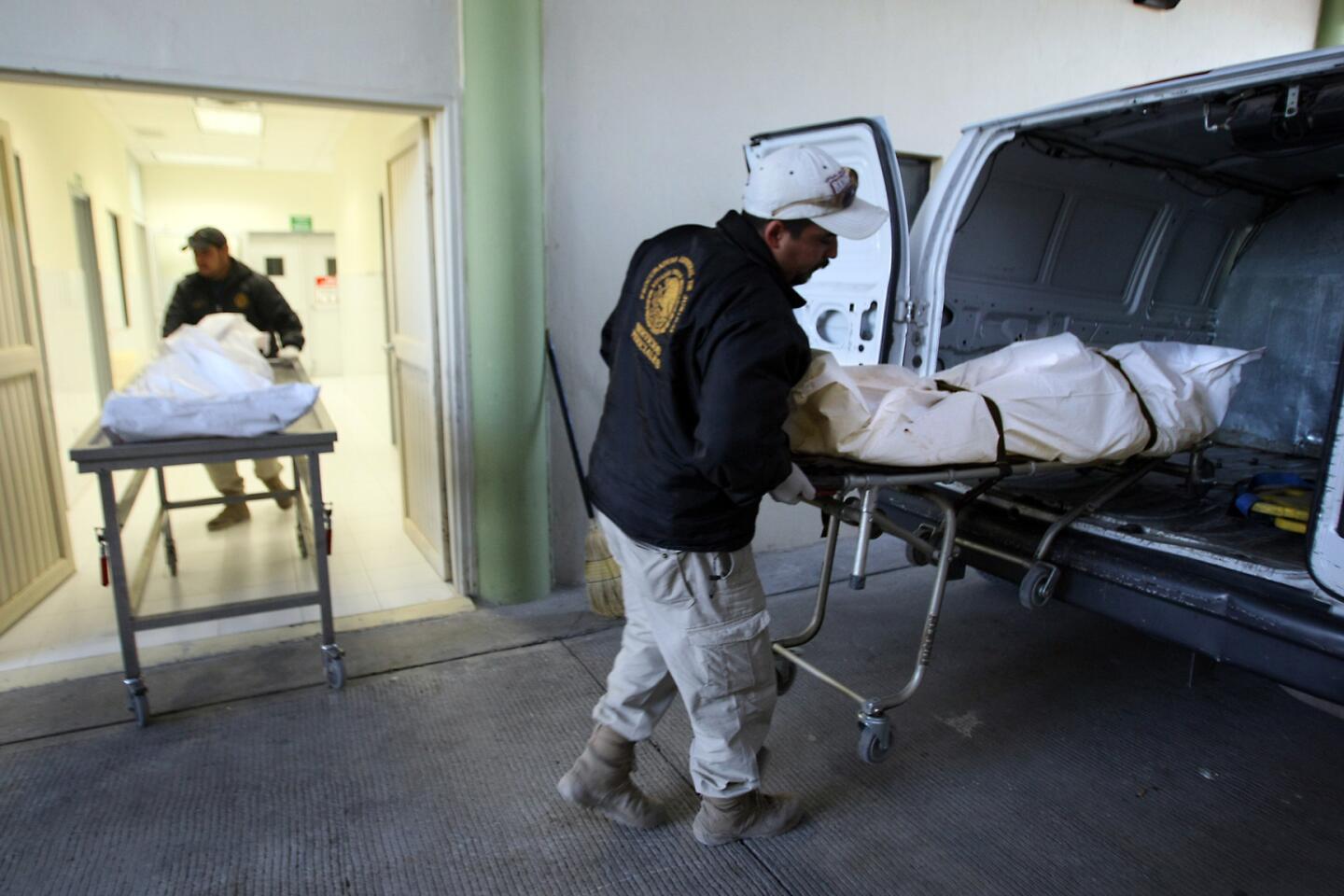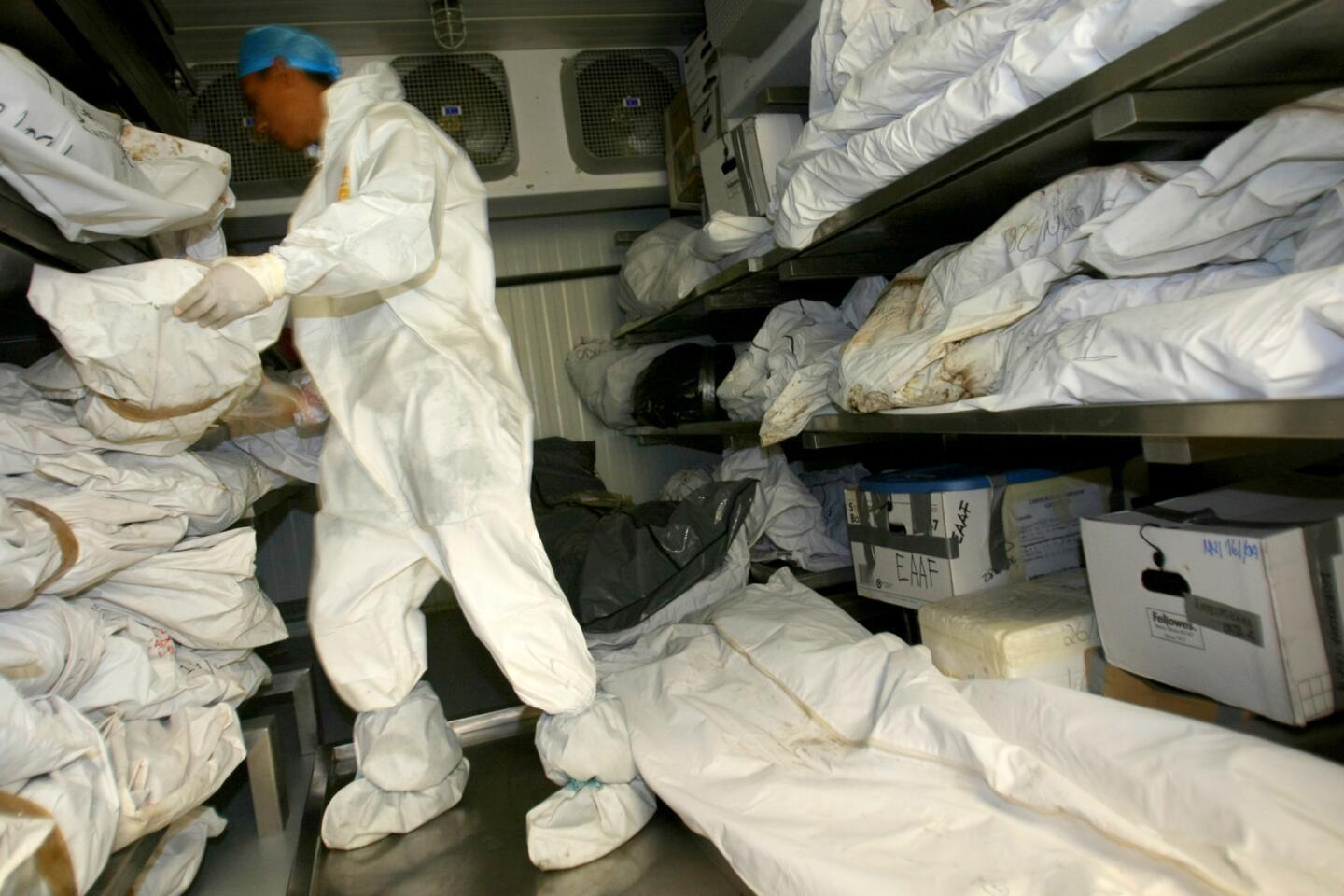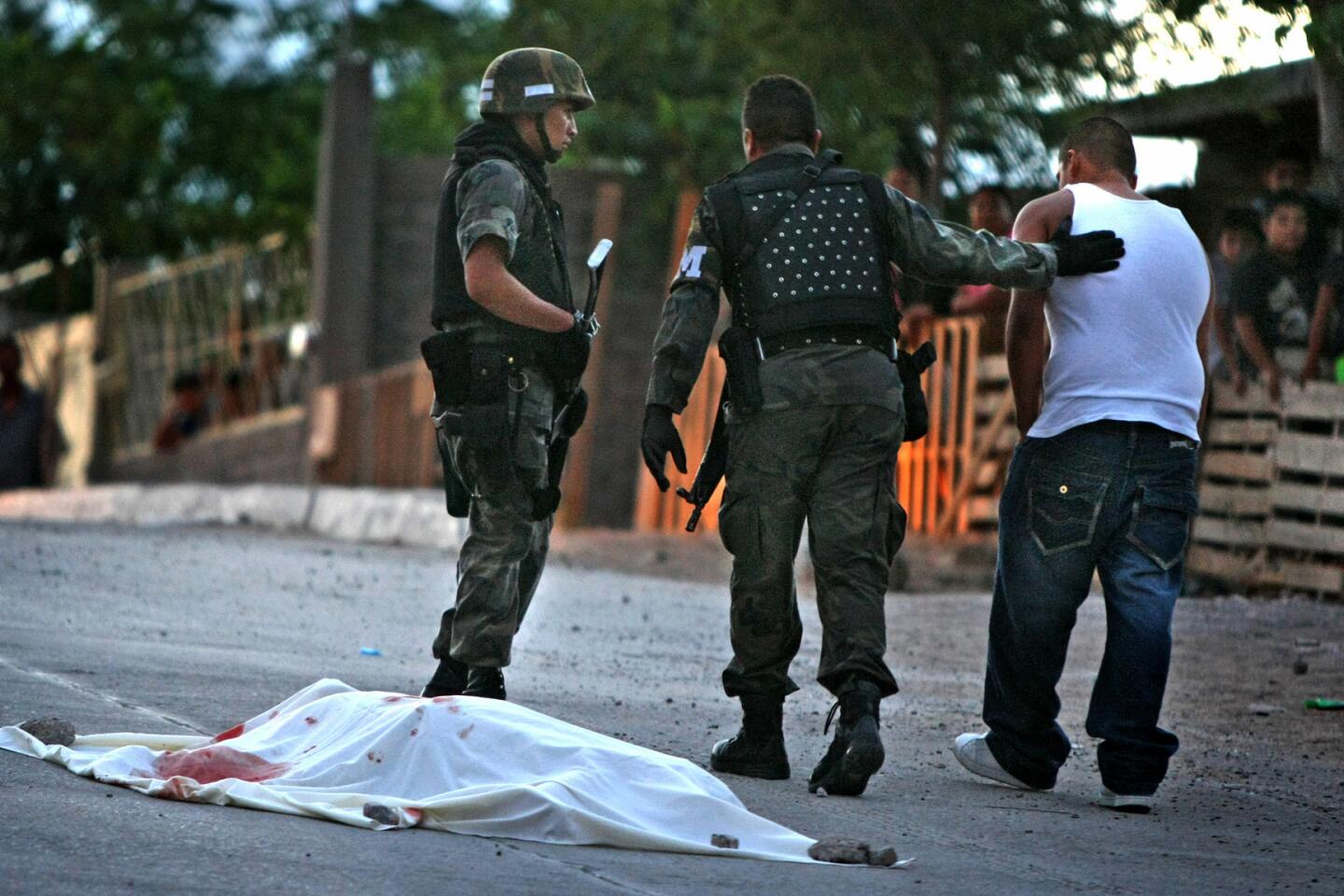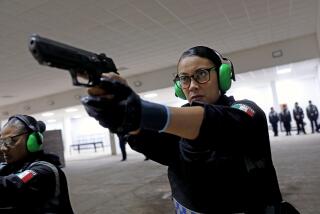Former murder capital of Mexico presents sunnier image for pope
Reporting from CIUDAD JUAREZ, Mexico — Not long ago, this sprawling border city was known as the murder capital of Mexico.
Hundreds of young women disappeared in the 1990s, falling victim to brutal robberies and murderous sexual assaults. Then battling drug cartels unleashed a worse wave of violence. Nearly 11,000 people were killed in the city from 2007 to 2013.
Texans from neighboring El Paso simply stopped going to Juarez: The number of car passenger and pedestrian crossings between the sister cities dropped by almost 8 million during the worst of the violence.
These days, billboards proclaim, “Juarez es amor” — “Juarez is love” — and officials are claiming a more than 40% drop in homicides over the last two years.
Next to the new “love” logo is an image of a smiling Pope Francis, whose visit next week is being greeted by Juarez officials as a chance to revive and rebrand their city, and to restore its frayed cultural and business ties to El Paso. Residents say they hope Francis and an expected 450,000 visitors see their city as a work in progress, safer but still struggling with crime and poverty.
“This will get rid of the notion that this is a city of violence,” said construction worker Victor Nunez, 36, as he stepped down from an earthmover.
Nunez was among construction crews working night and day to raise an open-air altar near the border where Francis will celebrate Mass for tens of thousands on Feb. 17, the culmination of his six-day tour to Mexico.

The Mexican city of Juarez, across the border from El Paso, prepares for a visit from Pope Francis.
Ciudad Juarez has managed to turn the story around over the last two years through a combination of developments, including the apparent victory of one drug gang over its rivals, a drawdown of federal police and troops, and new social programs launched by private business.
When Mexican President Enrique Peña Nieto visited the city last month, he announced the decline in homicides. Last year, Juarez had the lowest number since the surge in drug violence eight years earlier: 311, compared with 3,111 when the violence peaked in 2010.
The pope clearly chose to visit Juarez because of its troubled history. “The Mexico of violence, of corruption, of drug trafficking and cartels isn’t the Mexico our mother wants,” Francis said in a video message Wednesday, adding that he hopes to be “an instrument of peace.”
Many in El Paso say they plan to cross into Juarez for the pope’s visit, some for the first time in a decade. Of the 215,000 tickets distributed for the Mass, at least 10,000 went to El Paso. An additional 4,000 are expected to cross from the U.S. to join the human chain of 70,000 volunteers protecting the pope’s 25-mile route from the airport to Mass.
“The truth is, we’re united in many ways across our border,” said El Paso Bishop Mark Seitz, who will greet the pope in Juarez. “A high percentage of people in El Paso have relatives in Juarez or send their children to school there or work there. Our geography, our history unites us.”
But some in El Paso are still hesitant to cross, even for Francis.
“Imagine: All the criminals are going to be out,” said Rosemary Rivera, 45, as she sat with friends at a park in El Paso’s El Barrio neighborhood, where many Mexican families moved fleeing gang and cartel violence.
Juarez has always been a uniquely industrial border city: almost twice the size of El Paso, with hundreds of maquiladora factories and a population of more than 1.3 million.
Residents of the combined Paso del Norte region once routinely crossed the half-dozen border bridges in the area to shop and dine, especially at the bars fanning out from the foot of Santa Fe Street bridge, including the famed Kentucky Club with its mirrored mahogany bar built by distillers during Prohibition. The U.S. recession also cut down on cross-border traffic, but violence was the main deterrent.
In recent years, the mass killings abated, and the epicenter of border violence shifted east to Tamaulipas state. The Kentucky Club and others along Avenida Juarez whitewashed their facades and installed shiny new signs. Taco stands popped up again on street corners.
Join the conversation on Facebook >>
On a recent weekday, the centro historico red brick pedestrian mall in front of the Cathedral of Our Lady of Guadalupe was bustling with shoppers, the U-shaped diner counter and tables at La Nueva Central cafeteria packed with customers sipping cafe con leche and reading El Diario.
Nearby, Sara Castillo, 32, was selling photos and T-shirts of Pope Francis for about $5.
“I see more tourists coming” from the U.S., she said. “During the violence, people were afraid to come, even to the city center.”
Many stopped to pose for selfies in the centro historico with a cutout of Francis. There’s also a book set up nearby for people to write messages to the pontiff — 16,000 so far, many alluding to violence and poverty, asking for help and blessings.
Among those writing to the pope was Maria Calderon, 65, a homemaker who said friends have been calling her from the U.S. to ask whether they should come.
“They want to know if it’s safe,” she said. “I tell them it’s not like you see on the news. There are problems, but not like before.”
Father Kevin Mullins has worked in the Juarez area for 16 years and plans to attend the pope’s Mass and is preparing to host visitors and dispel misconceptions.
“People think that Juarez is just awash with depression, sadness, murder — which it is. But people fail to mention the nobility, joy and resilience. There’s a real liveliness about Catholicism in Mexico, especially Juarez,” he said, showing a video on his phone of recent services where worshipers danced and sang. (They also host regular Zumba classes.)
“People from Phoenix and all over are asking me if it is safe. It is,” insisted Father Hesiquio Trevizo Bencomo, a priest in Juarez. “There is not a state of fear. We Juarenses are inviting people to come and see the kind of city we are.”
Trevizo also noted that the pope plans to meet with workers during his visit to the city, and that some tickets to the Mass have been reserved for immigrants and victims of violence.
Pink crosses painted on street corners serve as a reminder of the killings of women and girls that some say still plague the city. Recently, Jose Castillo stood in front of the pope cutout and reminded passersby that his daughter Esmeralda disappeared seven years ago. She was 13.
“I don’t want to speak badly of my city, but it’s important that people understand the real situation in Juarez. The disappearances continue daily,” said Castillo, 56, wearing a T-shirt with a picture of his daughter, wide-eyed and apple-cheeked.
“He’s coming to talk about peace, but we don’t have peace,” said his wife, Martha Rincon, 56. “I think lots of people will cross because the officials say, ‘There is little violence, everything is calm in Juarez.’ It’s not true.”
This fall, 90 Juarez maquiladora workers who earned about $32 a week making printer cartridges at a Lexmark factory were fired after demanding 35 cents more per day. None have been invited to meet with the pope or attend his Mass.
“I want him to come and not just give a blessing but say workers, raise your voices,” said their attorney, Susana Prieto Terrazas.
Across the border in El Paso, public schools and businesses will close when the pope visits, and the Sun Bowl stadium will host a simulcast of the Mass for 50,000 whom the pope is also expected to bless.
El Paso officials are closing off the U.S. side of the border opposite where the 4 p.m. Mass will be held at the old Juarez fairgrounds, but will allow several hundred immigrants into the area.
“Before he celebrates Mass, he’s going to pass by the river, by the border. He’s going to kneel down in front of a cross there by the river and pray for migrants who didn’t make it. When he does that, we’re going to be on the other side of the border,” said Dylan Corbett, executive director of the El Paso-based Hope Border Institute.
The group plans to post signs facing both ways that say, “Immigrant lives matter.”
U.S. Rep. Beto O’Rourke, who represents the area, grew up in El Paso and often crosses to attend soccer games and dine with relatives. He plans to see the pope and hopes his visit reminds people in the region that their fate is tied to Mexico.
“The pope is going to talk about inequality, and that’s what this area represents in many ways,” he said.
Enrique Ortiz, 52, of El Paso, a retired mental health worker, has already made a hotel reservation in Juarez and recently walked across the border to check out construction of the papal altar.
He’s heard some people complain that the pope should have come to El Paso. They say the cost to the city — about $1 million for traffic control, security and other costs — feels like paying for a neighbor’s party. But Ortiz is glad the pontiff chose Juarez.
“It’s our neighbors’ chance to shine,” he said.
Twitter: @mollyhf
See the most-read stories this hour >>
MORE ON THE POPE’S MEXICO VISIT
Pope Francis plans a symbolically freighted trip to Mexico
Where the pope will visit in Mexico
More to Read
Sign up for Essential California
The most important California stories and recommendations in your inbox every morning.
You may occasionally receive promotional content from the Los Angeles Times.
